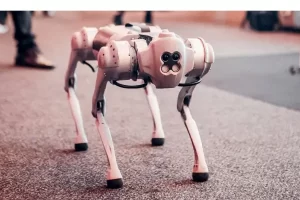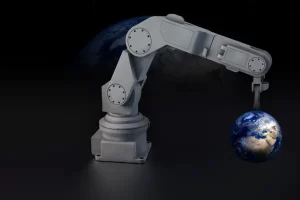As technology continues to advance at an unprecedented pace, home service robots are becoming a staple in households around the globe. From robotic vacuum cleaners that effortlessly navigate around furniture to automated lawn mowers that keep yards pristine, these devices are reshaping the way we approach everyday tasks. The rise of smart home technology has fueled consumer interest and innovation in this sector, making it essential to explore the future trends that will define home service robots in the coming years.
In this article, we will delve into the current state of home service robots, emerging technologies, expanding capabilities, consumer expectations, challenges faced by the industry, and predictions for the future. Understanding these elements will provide insight into how home service robots will continue to evolve and integrate into our lives.
Current State of Home Service Robots
The home service robot market has seen significant growth over the past decade. As of now, popular robots include autonomous vacuum cleaners like the Roomba, robotic lawn mowers, and even security drones. These devices utilize advanced sensors, cameras, and AI to perform specific tasks with minimal human intervention.
Key Technologies Powering These Devices
At the heart of these innovations lies a combination of artificial intelligence (AI), machine learning, and the Internet of Things (IoT). AI enables robots to learn from their environment, making real-time decisions that enhance efficiency. Machine learning algorithms allow robots to improve their performance over time by analyzing patterns and user interactions. Meanwhile, IoT integration enables these devices to communicate with other smart home appliances, creating a cohesive ecosystem that enhances user experience.
Emerging Technologies Shaping the Future
As we look to the future, several emerging technologies promise to significantly impact the development and capabilities of home service robots.
Advanced AI and Machine Learning
The evolution of AI will continue to be a game-changer in the robotics industry. Future home service robots will leverage advanced algorithms to better understand their surroundings, anticipate user needs, and adapt to changing environments. For example, a robot could learn the layout of a home, optimizing its cleaning routes over time while avoiding obstacles more effectively.
Robotics and Automation
Innovations in robotics, particularly in mobility and dexterity, will allow robots to perform a wider array of tasks. Future models may incorporate advanced manipulative capabilities, enabling them to not only clean but also assist in cooking, organizing, and even minor repairs. Collaborative robots, or cobots, designed to work alongside humans, may also become commonplace, enhancing the capabilities of household members rather than replacing them.
Integration with Smart Home Systems
As homes become increasingly interconnected, the integration of home service robots with smart home systems will enhance their functionality. Imagine a scenario where your robotic vacuum not only cleans the floors but also communicates with your smart thermostat to optimize energy usage or with your security system to alert you of any unusual activity while you are away. This level of integration will streamline household management and create a more efficient living environment.
Expanding Capabilities of Home Service Robots
As technology advances, so too will the capabilities of home service robots. Consumers will expect these devices to do more than just one task.
Increased Versatility
The future of home service robots lies in their versatility. Rather than being confined to single tasks, future robots will be designed to handle multiple duties. For instance, a multi-functional robot could clean floors, manage gardens, and even assist with meal prep, all while communicating with other smart devices. This will not only save time but also space, as homeowners may only need one robot instead of several specialized devices.
Enhanced Autonomy
Autonomy will be a key focus in the development of future home service robots. With advancements in navigation technologies such as LiDAR, GPS, and advanced sensors, robots will operate more independently. Future robots may even develop the capability to perform tasks based on user-defined schedules, recognizing when to charge themselves and when to carry out their tasks without any human input.
Personalization and Customization
As consumers increasingly demand personalized experiences, home service robots will need to adapt accordingly. Future robots may come equipped with advanced AI that allows them to learn and adapt to individual user preferences. For example, a cleaning robot might recognize which rooms are used most frequently and prioritize those areas during cleaning sessions. Customization options could also allow users to set specific parameters for each robot, such as cleaning intensity or preferred times for operation.
Consumer Trends and Expectations
Understanding consumer trends is crucial for anticipating the future of home service robots. As more households embrace automation, expectations will continue to rise.
Shifts in Consumer Behavior Towards Automation
The COVID-19 pandemic accelerated the adoption of smart technologies as people sought to minimize physical contact and streamline daily tasks. Consumers are increasingly drawn to devices that enhance convenience and efficiency. Future marketing strategies for home service robots will need to emphasize these benefits, showcasing how robots can reduce workload and improve quality of life.
Growing Demand for User-Friendly Interfaces
As technology evolves, so does consumer literacy. Users are looking for products that offer intuitive, user-friendly interfaces. Future home service robots will likely feature more accessible designs, including voice commands, mobile app integration, and easy-to-navigate touch screens. The focus will be on creating seamless interactions that make technology less intimidating and more integrated into everyday life.
Environmental Considerations
Sustainability is becoming a critical factor in consumer decision-making. As awareness of environmental issues grows, consumers are increasingly seeking eco-friendly options. Home service robots that utilize energy-efficient technologies, biodegradable materials, and eco-conscious manufacturing processes will likely see higher demand. Companies that prioritize sustainability in their product development will resonate more with environmentally conscious consumers.
Challenges Facing the Industry
Despite the promising future of home service robots, several challenges must be addressed to realize their full potential.
Technical Challenges
While advancements in AI and robotics have been significant, technical limitations still exist. Developing robots that can navigate complex environments, interact safely with humans, and perform a wide range of tasks requires ongoing research and innovation. Overcoming these technical challenges will be essential for creating more capable and reliable home service robots.
Safety and Security Concerns
As with any technology, safety and security are paramount. Consumers need assurance that their devices will operate safely in their homes. Privacy concerns regarding data collection and surveillance will also play a critical role in adoption rates. Companies must prioritize cybersecurity measures and be transparent about how data is used to build trust with consumers.
Market Competition
The home service robot market is becoming increasingly competitive, with numerous companies vying for market share. This competition can drive innovation but may also lead to oversaturation, making it difficult for consumers to choose the right products. To succeed, companies must focus on differentiating their offerings through unique features, superior performance, and customer service.
Future Predictions for Home Service Robots
Looking ahead, several predictions can be made about the future of home service robots and their impact on daily life.
Market Growth and Economic Impact
The home service robot market is projected to continue its rapid growth, driven by technological advancements and increasing consumer demand. According to industry reports, the global market for home service robots could reach several billion dollars in the next few years. This growth will not only lead to increased availability of home service robots but also create new job opportunities in robotics development, customer service, and maintenance.
Innovative Use Cases
As technology evolves, innovative use cases for home service robots will emerge. Beyond cleaning and maintenance, robots may assist in healthcare, particularly for elderly individuals who need support with daily tasks. For instance, a robot could remind users to take medication, help with mobility, or provide companionship. The potential applications for home service robots are vast, and the integration of advanced sensors and AI will unlock new possibilities.
Global Trends and Adoption Rates
Adoption rates for home service robots will vary across different regions. In developed countries, where smart home technology is more prevalent, the acceptance of home service robots will likely be higher. In contrast, emerging markets may see slower adoption due to economic factors and limited access to technology. However, as prices decrease and technology becomes more accessible, we can expect a global increase in the use of home service robots.
Conclusion
The future of home service robots is bright, filled with promise and potential. As technology continues to advance, these devices will become more capable, versatile, and integrated into our daily lives. By understanding the trends shaping this industry, consumers can make informed decisions about the technologies that will enhance their homes and lifestyles.
As we look ahead, it is clear that home service robots will play an increasingly vital role in managing household tasks, improving efficiency, and ultimately enhancing our quality of life. Staying informed about these developments will be essential as we embrace the future of home service automation.
Additional Resources
- Links to research papers on AI in robotics
- Articles on the environmental impact of smart technologies
- Reviews of current home service robots




